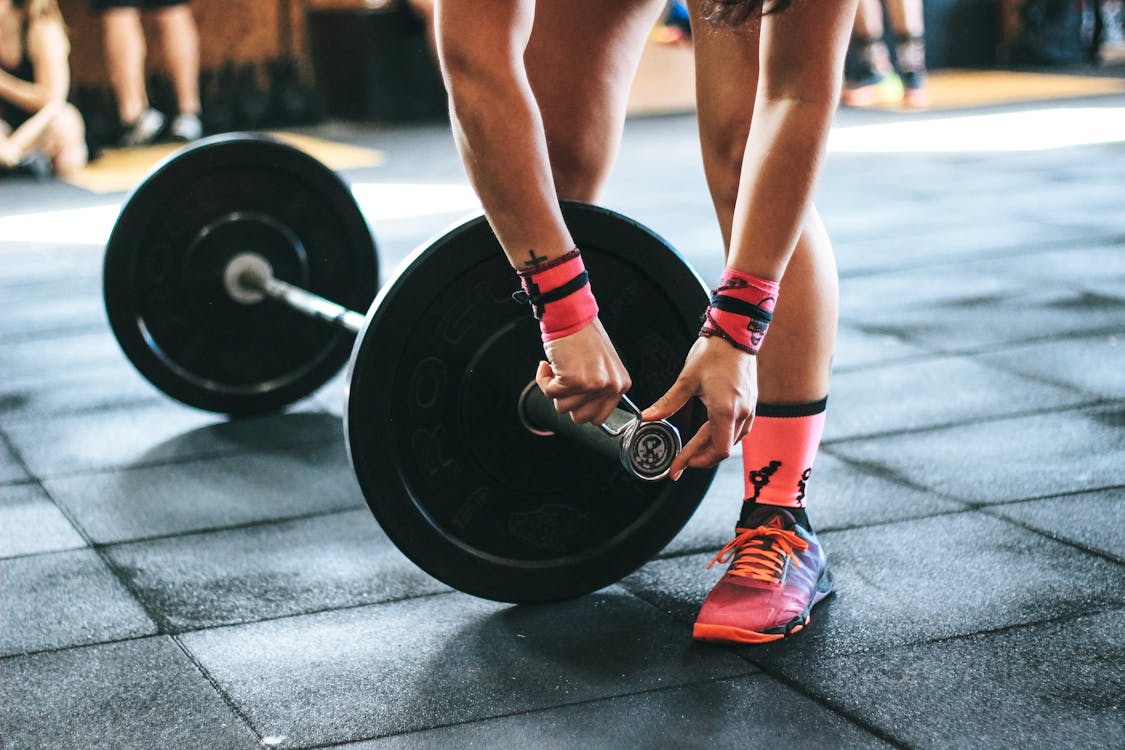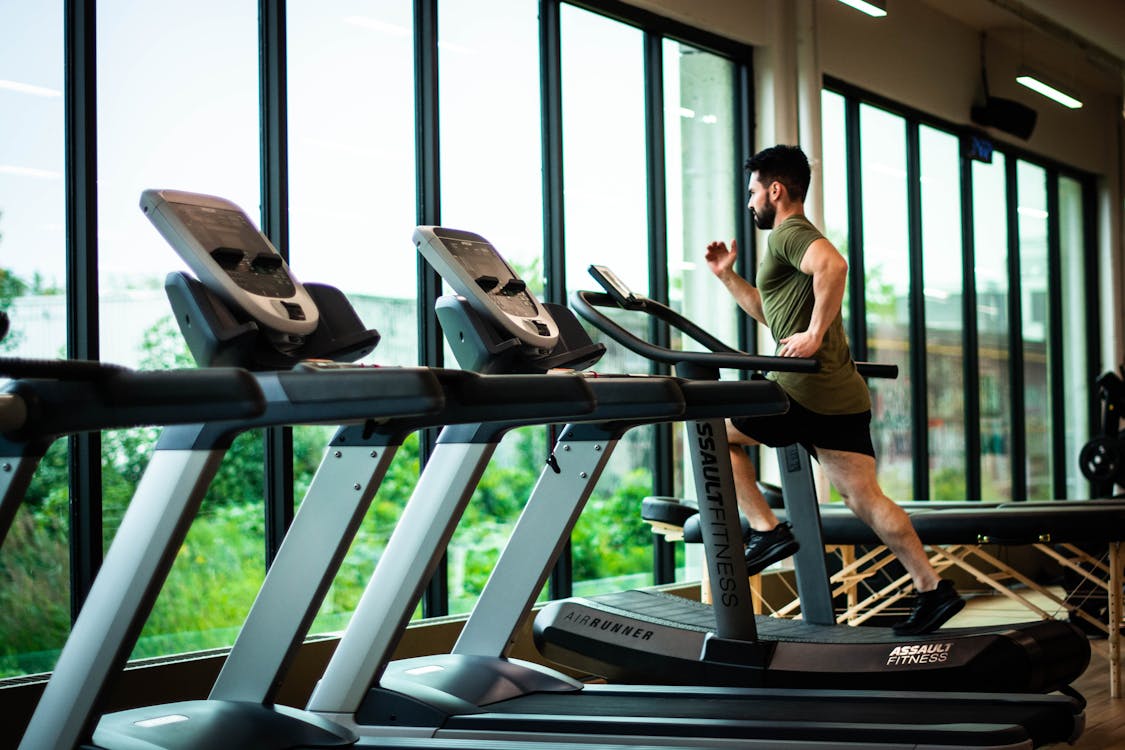Ever feel like your metabolism is a mysterious black box, dictating your energy levels and weight with rules you can't quite decipher? You're certainly not alone in this! Many of us hear the word "metabolism" and picture a raging furnace that some people are blessed with, while others have a mere pilot light. The internet is awash with promises of "metabolism-boosting" superfoods and quick-fix hacks. But what if I told you that understanding and influencing your metabolism is less about magic and more about science and sustainable lifestyle choices? Let's embark on a journey to truly understand what makes your metabolic engine tick, cut through the widespread confusion, and uncover what genuinely works to give it a natural, lasting boost. Prepare to separate metabolic fact from pervasive fiction!

Unlocking your body's potential starts with understanding your unique metabolism.
Decoding Your Metabolism: It's More Than Just a Single Speed
Before we even think about "boosting" anything, let's get crystal clear on what metabolism actually is, especially in the context of health and fitness. At its core, your metabolism refers to all the chemical processes that occur within your body to maintain life. When we talk about it in relation to calorie burn and weight management, we're primarily focused on your Total Daily Energy Expenditure (TDEE). Think of TDEE as the grand total of calories your body burns over a 24-hour period. This isn't a single number that's set in stone; it's a dynamic sum of several components:
- Basal Metabolic Rate (BMR): This is the foundational component, representing the calories your body burns just to stay alive if you were to do absolutely nothing all day – think breathing, circulating blood, cell production, and brain function. BMR accounts for the largest chunk of your TDEE, typically 60-75%.
- Thermic Effect of Food (TEF): Believe it or not, your body expends energy to digest, absorb, and process the nutrients from the food you eat. This is TEF, and it accounts for about 10% of your TDEE. Interestingly, protein has a higher TEF than fats or carbohydrates.
- Activity Energy Expenditure (AEE): This is where things get more variable and where you have significant influence. AEE is broken down into:
- Exercise Activity Thermogenesis (EAT): Calories burned during planned, structured exercise sessions like going for a run, lifting weights, or attending a fitness class.
- Non-Exercise Activity Thermogenesis (NEAT): This is the unsung hero of calorie burning! NEAT encompasses all the calories burned from activities that aren't formal exercise. We're talking about walking to your car, typing, fidgeting, doing chores, taking the stairs, even maintaining posture. The impact of NEAT can vary dramatically between individuals.
One of the most eye-opening insights from the video summary is the sheer variability in metabolic rates. A comprehensive study involving over 6,000 individuals revealed that TDEE can fluctuate astonishingly – from as low as 1,400 calories to a whopping 5,700 calories per day, even among people of the exact same body weight! This highlights that metabolism isn't a one-size-fits-all equation. Factors like genetics, age, sex, hormonal status, and, crucially, body composition (the ratio of muscle to fat) all play significant roles. So, the burning question remains: can someone with a naturally more 'sluggish' metabolism genuinely turn up the heat?

Your TDEE is a sum of BMR, TEF, EAT, and the highly variable NEAT.
Clearing the Fog: Debunking Common Metabolism Myths
The wellness world is rife with "miracle" solutions promising to supercharge your metabolism overnight. It's easy to get lured in by these claims, but let's arm ourselves with scientific understanding and critically examine some of the most prevalent myths, as highlighted in the video's analysis.

Let's sift through the hype and find the truth about metabolism.
💧 The Cold Water "Shock" – More of a Ripple than a Wave
You've likely heard that chugging ice-cold water can kickstart your metabolism. The theory is based on thermogenesis: your body has to expend energy (calories) to warm the cold water up to your core body temperature. While this is true, the effect is remarkably small. We're talking about an increase of approximately 8 extra calories burned per glass. To put that into perspective, a single small cookie could easily negate the "benefit" of several glasses. So, while staying hydrated is absolutely crucial for overall health and can support metabolic processes indirectly, relying on cold water as a significant fat-loss tool is misguided. Drink water because it's good for you, not because you expect it to magically melt pounds.
🍵 Green Tea's Gentle Nudge, Not a Metabolic Shove
Green tea is often celebrated for its antioxidant properties and, in some circles, its supposed metabolism-boosting prowess, largely attributed to compounds like catechins (especially EGCG) and caffeine. While some studies have shown minor, short-term increases in metabolic rate or fat oxidation after green tea consumption, these effects are typically modest and don't consistently translate into meaningful, long-term fat loss for most people. Many studies are also confounded by factors like caffeine content, which itself has a mild thermogenic effect. So, enjoy your soothing cup of green tea for its pleasant taste and potential health perks, but don't bank on it to dramatically overhaul your calorie-burning capacity.
🌶️ Spicy Foods: A Tiny Spark for Thermogenesis, A Bigger Hint for Satiety
Capsaicin, the fiery compound that gives chili peppers their kick, has been shown to cause a small, temporary increase in metabolic rate – perhaps in the ballpark of an extra 20 calories burned per day for individuals who are overweight. While this direct calorie burn is pretty insignificant, capsaicin might play a more useful role in weight management by promoting satiety (the feeling of fullness and satisfaction after eating) and potentially reducing overall appetite. If spicy food helps you feel satisfied with smaller portions or reduces cravings, that indirect effect on calorie intake could be more impactful than the minor thermogenic boost.
🧖♀️ Saunas & Ice Baths: A Test of Tolerance, Not a Metabolic Shortcut
Exposing your body to extreme temperatures, like in a sauna or an ice bath, does force it to work harder to maintain its core temperature. This can lead to a temporary increase in heart rate (in a sauna) or shivering thermogenesis (in an ice bath), both of which burn some extra calories. However, the overall calorie expenditure from these activities is generally minimal in the grand scheme of things and certainly not enough to be a primary strategy for fat loss or significant metabolic enhancement. These therapies might offer other benefits like muscle recovery or stress reduction for some, but they aren't potent metabolism boosters.
🍽️ The Myth of Meal Frequency: Grazing Doesn't Stoke the Fire More
A long-standing belief is that eating multiple small meals throughout the day ("grazing") keeps your metabolism "stoked" more effectively than eating fewer, larger meals. This idea often stems from a misunderstanding of the Thermic Effect of Food (TEF). While your body does burn calories digesting food, the total TEF over a 24-hour period is primarily determined by your total calorie and macronutrient intake, not by how many meals you divide it into. As long as total daily calories and macros are equated, there's no significant metabolic advantage to eating six small meals versus three larger ones. The best meal frequency is the one that helps you manage hunger, maintain energy levels, and adhere to your overall nutritional plan.
The Real Deal: Evidence-Backed Strategies to Naturally Optimize Your Metabolism
Now that we've cleared away some of the clutter, let's focus on what truly moves the needle. These are the strategies, grounded in science and emphasized in the video's findings, that can genuinely help you optimize your metabolic health for the long haul.
💪 Build Lean Muscle: Your Body's Calorie-Burning Powerhouse
This is, without a doubt, the heavyweight champion of natural metabolism enhancement. Increasing your lean muscle mass is the single most effective way to significantly raise your resting metabolic rate (BMR). Why is muscle so metabolically precious? Muscle tissue is far more metabolically active than fat tissue. It requires more energy (calories) simply to exist and function, due to processes like protein turnover, glycogen storage, and higher mitochondrial density. At rest, muscle burns approximately three times more calories than fat. Consider this: gaining just 10 pounds of lean muscle could mean your body burns an extra 60-70 calories per day at rest. Over time, and with more substantial muscle gain (say, 20-30 pounds through consistent training), this can add up to hundreds of extra calories burned daily, making it easier to maintain a healthy weight or create a calorie deficit for fat loss. To build muscle, you need to engage in regular resistance training. This includes lifting weights, using resistance bands, or performing bodyweight exercises. Focus on progressive overload – gradually increasing the weight, reps, or intensity over time – to continually challenge your muscles and stimulate growth. Don't forget the "afterburn" effect, or Excess Post-exercise Oxygen Consumption (EPOC), where your body continues to burn extra calories for hours after an intense strength training session as it recovers and repairs.

Consistent strength training is paramount for building metabolic-boosting muscle.
🚶♀️ Maximize Your NEAT: The Secret Weapon of Everyday Movement
Non-Exercise Activity Thermogenesis (NEAT) is the real dark horse in the metabolic race, and it's something you have immense control over every single day. As mentioned, NEAT encompasses all the physical activity you do that isn't planned exercise. The difference in NEAT between a very sedentary person and a very active person (even if neither formally exercises) can amount to hundreds, even thousands, of calories per day! Think about it:
- Opting for the stairs instead of the elevator.
- Parking further away from your destination.
- Walking or pacing while on phone calls.
- Standing up and stretching regularly if you have a desk job.
- Fidgeting (yes, even fidgeting burns calories!).
- Engaging in active hobbies like gardening or DIY projects.
- Doing household chores with a bit more vigor.
- Taking short walk breaks throughout your workday.

Every step counts! Boost your NEAT by making active choices throughout your day.
🍽️ Fuel Wisely: The Power of Protein and Avoiding Extremes
What you eat, and how much, also plays a vital role.
- Sufficient Protein Intake: Protein isn't just for bodybuilders! It has the highest Thermic Effect of Food (TEF) compared to fats and carbohydrates, meaning your body burns more calories digesting and processing it. Adequate protein intake is also crucial for repairing and building muscle tissue, which, as we've established, is key for a higher BMR. Aim to include a good source of lean protein with each meal.
- Avoid Severe Caloric Restriction: Drastically slashing your calorie intake for extended periods can backfire. Your body is smart; it senses prolonged, severe energy deficits and can adapt by slowing down your metabolic rate to conserve energy. This phenomenon is known as "metabolic adaptation" or "adaptive thermogenesis." It's a survival mechanism that makes further weight loss harder and weight regain more likely. Aim for a moderate, sustainable calorie deficit (typically 0.5 to 1% of body weight loss per week) to preserve muscle mass and protect your metabolic rate.
😴 Prioritize Quality Sleep: The Unsung Metabolic Regulator
Don't underestimate the power of a good night's sleep! Chronic sleep deprivation can wreak havoc on the hormones that regulate your appetite and metabolism. Lack of sleep can:
- Increase levels of ghrelin (the hunger hormone).
- Decrease levels of leptin (the satiety hormone).
- Increase cortisol levels (a stress hormone that can promote fat storage, especially around the midsection).
- Impair insulin sensitivity.

Quality sleep is essential for hormonal balance and optimal metabolic function.
🏃♀️ Cardio Considerations: A Useful Tool, Not a Magic Wand
Cardiovascular exercise – like running, cycling, swimming, or brisk walking – certainly contributes to your daily calorie burn (the EAT component). However, as the video insightfully points out, our bodies are clever at energy compensation. Research suggests that for every 100 calories burned through dedicated cardio, your net increase in TDEE might only be around 72 calories. This is because the body may subconsciously reduce NEAT later in the day to conserve energy. This doesn't mean cardio is useless – far from it! It's fantastic for heart health, endurance, and mood. But it's important to have realistic expectations about its direct impact on your overall metabolic rate and fat loss. Combine cardio with strength training and a sound nutrition plan for the best results, rather than relying solely on cardio to create a significant calorie deficit.
🤔 A Curious Case: Weighted Vests (Potentially Promising, But More Evidence Needed)
The concept of using weighted vests to "trick" the body's internal weight-regulating system (the "gravitostat") is intriguing. The theory suggests that by making the body feel heavier through added load, it might upregulate metabolic processes to support that perceived higher weight. While this is a novel idea with some plausible physiological underpinnings, it's still in the early stages of research. More rigorous, controlled studies are needed to confirm its effectiveness, safety, and practical application for different populations before it can be widely recommended as a metabolism-boosting strategy.
🔥 READY TO TRANSFORM YOUR WELLNESS & UNLOCK YOUR METABOLIC POTENTIAL? 🔥
✅ GET THE ULTIMATE 30-DAY HOLISTIC WELLNESS JOURNEY NOW AND BUILD SUSTAINABLE HABITS FOR A HEALTHIER METABOLISM!
🎯 LIMITED TIME OFFER: START YOUR JOURNEY TO A MORE ENERGETIC YOU!
👇 CLICK HERE TO GET STARTED 👇
🛒 GET THE ULTIMATE 30-DAY HOLISTIC WELLNESS JOURNEY NOW →Beyond the Burn: The True Drivers of Long-Term Fat Loss & Wellness Success
Here's a critical takeaway that the video summary powerfully underscores: while understanding and optimizing your metabolism is valuable, your baseline metabolic rate is NOT the sole, or even primary, determinant of long-term weight management success. What truly tips the scales in favor of lasting results are consistent behaviors and psychological factors. Think about these cornerstones:
- Unwavering Consistency: Perfection isn't the goal; consistency is. Sticking to your healthy eating patterns and exercise routine most of the time will yield far better results than sporadic bursts of intense effort followed by long periods of inactivity or unhealthy choices.
- Embracing Physical Activity (All Forms!): This means a combination of structured exercise (strength training, cardio) that you enjoy AND a conscious effort to maximize your NEAT throughout the day. Movement should be an integral part of your lifestyle, not a chore.
- The Power of Self-Monitoring: Regularly tracking your progress – whether through weighing yourself, taking body measurements, noticing how your clothes fit, or logging your food intake – provides invaluable feedback. It helps you stay accountable, identify patterns, and make necessary adjustments to your plan.
- Building Sustainable Lifestyle Habits: Crash diets and extreme workout regimens rarely last. True success comes from gradually incorporating small, manageable changes that you can maintain for a lifetime. This is where a holistic approach, like the one fostered by The Ultimate 30-Day Holistic Wellness Journey, can be incredibly beneficial, guiding you to build these foundational habits for overall well-being, which naturally supports a healthy metabolism.
Essentially, it's about shifting your focus from chasing a "faster" metabolism to cultivating a healthier, more active, and more mindful lifestyle. Your metabolism will thank you for it!
The Advantage of Personalized Tracking & Adaptation
Generic online calculators that estimate your calorie needs can be a decent starting point, but they don't account for your unique metabolic individuality or how your body adapts over time. The video mentioned the MacroFactor app as an example of a tool that takes a more dynamic, personalized approach. Such tools continuously adjust your calorie and macronutrient targets based on your actual weight changes and logged food intake. This real-time feedback loop allows for a much more tailored and effective strategy, helping you understand how your body truly responds to different energy intakes. Whether you use a specific app or learn to track and adjust manually, this principle of personalization is key to navigating your fitness journey successfully.

Personalized tracking and adjustments lead to more effective and sustainable results.
Your Path to a Revitalized Metabolism and a Healthier You
So, can you give your metabolism a meaningful boost? Absolutely! But it's not about searching for elusive shortcuts or magic pills. It’s about adopting a smart, science-backed, and sustainable approach. The most potent strategies involve consistently building and maintaining lean muscle mass through strength training, consciously increasing your daily non-exercise activity (NEAT), fueling your body with adequate protein, prioritizing quality sleep, and avoiding overly restrictive, unsustainable dieting practices.
Perhaps more importantly, remember that your metabolic rate is just one piece of a much larger health puzzle. Long-term success in achieving and maintaining a healthy weight, feeling energetic, and thriving comes from a holistic commitment to consistent, positive lifestyle habits. Focus on nourishing your body with whole foods, moving in ways that bring you joy, building strength and resilience, and being patient and kind to yourself throughout the process. These are the true cornerstones of not just a healthier metabolism, but a vibrant, healthier, and happier you!
Ready to take a comprehensive approach to your well-being?
Discover The Ultimate 30-Day Holistic Wellness Journey and build habits that last!Suggested Labels: Boost Metabolism, Increase Metabolism, Fat Loss Strategies, Healthy Lifestyle Habits, NEAT Explained, Building Muscle for Metabolism, Metabolism Myths Debunked, Holistic Wellness Approach, Fitness and Nutrition Tips, Sustainable Weight Loss, Energy Boost
